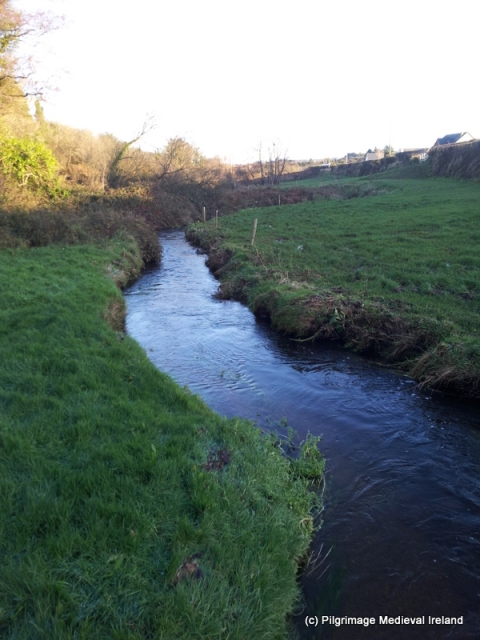The first post of 2014 is about St Bartholomew’s well in the townland of Garryantaggart Co. Cork. By coincidence the first post of 2013 was also about a holy well of the same name at Kinsalebeg Co. Waterford.
St Bartholomew’s well is located close to a junction with the R639, the old road linking the towns of Fermoy and Midelton. The well is easy to find and there is a signpost at the Ballinwillin Bridge junction.
According to Power writing in 1923 the townland name Garrynataggart or Garraidh an tSagairt in Irish means ‘the priest’s garden’. The well is dedicated to St Bartholomew who was one of the 12 apostles. Following the ascension of Christ he engaged in missionary work and is believed to have brought Christianity to Armenia, where he was later martyred. Tradition holds he was flayed alive and crucified. In the Western church his feast is commemorated in the 24th of August.
Power (1923, 172) noted that devotions were held here at the Garrynataggart well on St Bartholomew’s feast day in the early 1920’s
Around hang, or are deposited, votives of the usual kind, and devotions are paid on August 24th.
The well is on private land but the site is very accessible. A small lay-by at the side of the road provides parking for visitors to the well. To approach the well one must enter a the field via some concrete steps and then continue a short distance across the field to a small river.
The river is bridged by a timber bridge with a gate.
The well is located on the other side of the bridge on a south-facing slope. The area is very neat and tidy and there is a bench above the well, implying the site is still cared for by local people.
The well is a natural spring it is surrounded by a tear shaped stone wall with a rounded top.
The well is entered at the south through a door with a gable faced facade. At the top of the gable is an iron cross and a plaque stating the dedication of the well.
A number of ceramic mugs are found inside the well structure on the left is a small recess.
The well is still in use and visited, as evident from the neatness of the surrounding area and a small number of coins left in the water.
As I mentioned above devotions were being carried out at the well on the 24th of August on the saints feast day. Power (1923, 172) also mentions people leaving offerings at the well.
Around hang, or are deposited, votives of the usual kind…..
Today apart from the coins in the water of the well there is an image of the saint hanging from the well structure.
Id love to find out more about modern traditions at the well so if anyone has any information please get in touch either by commenting on this post or emailing pilgrimagemedievalireland@gmail.com.
(C) Louise Nugent
Reference
Power, P. 1923. ‘Place-Names and Antiquites of S.E. County Cork. Barony of Barrymore. Part III.’ PRIA Vol. 36, 164-205.








[…] https://pilgrimagemedievalireland.com/2014/01/13/st-bartholmews-well-garrynataggart-co-cork/ […]